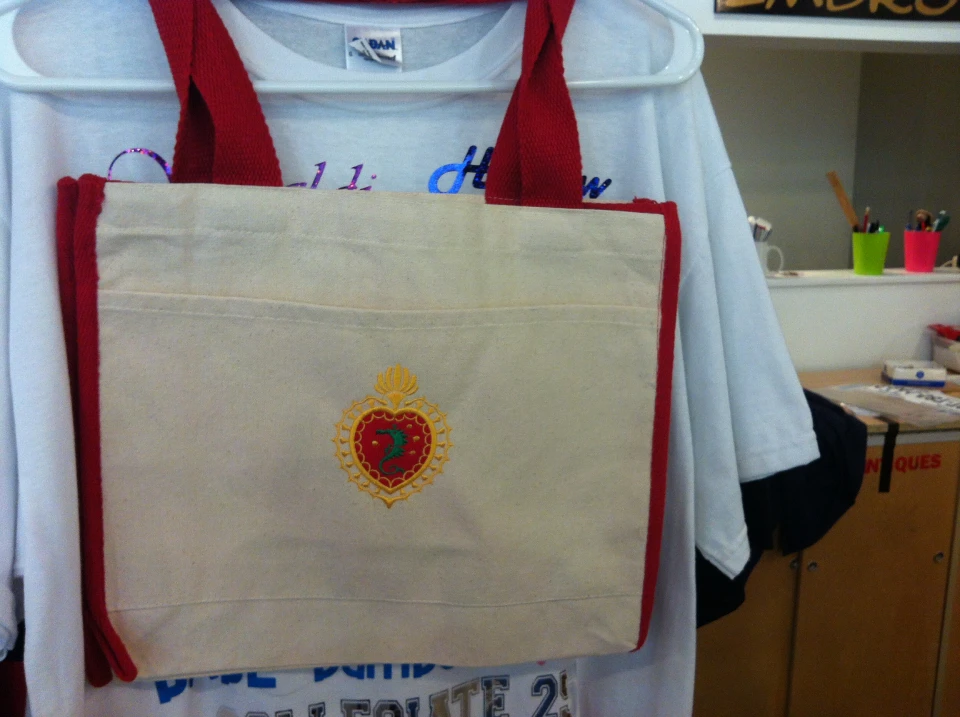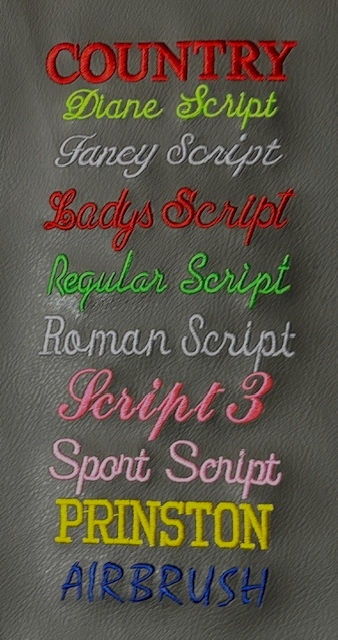Embroidered Sports Teams Names and Numbers - Expert and Durable
Embroidered Sports Teams Names and Numbers - Expert and Durable
Blog Article
The Art of Personalized Needlework: Unlocking the Keys to Creating One-of-a-kind and Remarkable Designs
The secrets to creating custom needlework layouts that mesmerize the eye and leave a lasting perception lie in a fragile balance of strategy, imagination, and focus to information. As we delve right into the world of customized needlework, we uncover the nuanced interplay between thread selection, stitch intricacy, and design personalization that boosts a mere garment to a job of art.
Choosing the Right Embroidery Threads
When picking embroidery strings, what vital aspects should you consider to make certain the finest results for your custom-made designs? The selection of embroidery thread is crucial in establishing the final outcome of your stitched layout. Among the main factors to consider is the material of the thread. Various materials such as cotton, polyester, rayon, and silk offer varying degrees of shine, longevity, and structure. It is necessary to select a string material that matches the material you are stitching on and aligns with the wanted appearance of the style.
Thicker strings can include measurement and structure to your layout, while finer threads are optimal for detailed details and little message. Additionally, considering the shade fastness and washability of the string is crucial to ensure that your personalized layouts keep their top quality and vibrancy over time.
Discovering Various Stitch Strategies
To dive right into the world of 'Checking out Different Stitch Techniques', one should grasp the intricacies and subtleties that each sewing technique gives the art of embroidery. Different stitch strategies not just add visual interest but additionally add to the total structure and measurement of the design. One popular stitch technique is the satin stitch, which entails carefully packed parallel stitches to produce a smooth and glossy surface, ideal for loading in shapes and producing vibrant details.
On the various other hand, the backstitch is a functional technique often used for detailing and adding fine information. It entails sewing in reverse to create a strong line of needlework. In addition, the French knot stitch adds a tactile element to designs, best for creating textured accents like flower facilities or decorative touches.
Exploring different stitch techniques allows embroiderers to have fun with light, shadow, and depth within their layouts, boosting the visual appeal and creative top quality of their needlework tasks. By understanding numerous sewing approaches, one can open countless opportunities you could check here for developing unique and memorable customized embroidery pieces.
Incorporating Personalized Design Components
Having actually discovered the intricacies of various stitch strategies such as the satin stitch, backstitch, and French knot, the emphasis currently shifts in the direction of incorporating tailored layout components in custom-made embroidery projects. Personalized layout aspects play a critical function in making embroidery projects genuinely special and memorable. One means to include personalization is by including initials, names, or considerable days to the style. This not only includes a personalized touch yet also enhances the emotional worth of the embroidery piece.
One more way to include individualized style aspects is by including symbols or concepts that hold unique significance to the recipient or mirror their passions and individuality. As an example, including a favorite flower, animal, or hobby-related sign can make the embroidery style a lot more significant and individualized. Furthermore, choosing colors that resonate with the recipient or straighten with the designated style can even more enhance the customization of the needlework job.
Grasping the Art of Color Coordination

One key element of shade sychronisation is recognizing shade theory. This consists of recognizing exactly how different shades communicate with each other, the emotions they convey, and how try this they can be combined to produce aesthetically attractive styles. By applying shade theory concepts, embroiderers can develop harmonious shade combinations that enhance the total look of the style.
Additionally, taking notice of contrast is critical in shade control. Making use of contrasting shades can help certain aspects of the layout pop, boost legibility, and produce a visually vibrant needlework piece. By mastering the art of color control, embroiderers can raise their layouts and create memorable pieces that resonate with clients and audiences alike.
Enhancing Structure With Advanced Needlework Stitches

Bullion knots, on the other hand, can be used to develop twisted, ropelike elements that add a lavish feel to the needlework. Trying out with these sophisticated embroidery stitches enables you to push the limits of typical embroidery and create really one-of-a-kind and visually enticing textures in your styles.
Conclusion
To conclude, the art of custom-made embroidery involves a mix of picking the ideal strings, discovering various stitch strategies, integrating individualized design elements, mastering color coordination, and improving appearance with innovative stitches. By recognizing and executing these key aspects, embroiderers can create special and memorable styles that showcase their imagination and skill. Embroidery fanatics can unlock the secrets to creating stunning and bespoke pieces that stand out and leave an enduring impression.
Report this page